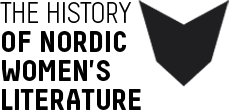On Danish Eighteenth-Century Periodicals and Libraries
Tag: Denmark
The eighteenth-century women dramatists cover a wide spectrum of styles. Both Anna Catharina von Passow and Birgitte Catharine Boye wrote pastorals, but they soon branched off in different directions. Boye devoted her pen to the heroic drama, and Passow began to experiment with the new form of comedy, which was the genre on which Charlotta Dorothea Biehl concentrated.While Boye’s stage art represents a high-flown conclusion to the eighteenth-century heroic drama, Passow and Biehl are of an earlier generation; they were innovative and made a major contribution to the continuation of the Danish public theatre in the period following Holberg’s death in 1754.
The Danish authors Charlotte Dorothea Biehl and Sophia Lovisa Charlotte Baden, along with a number of anonymous women, wrote prose that was both moralising and emotionally instructive. Biehl in her moral tales. Baden in her moral epistolary tales.Family issues and scheming love stories are key to a protracted plot, the mainspring of which is often a dispute concerning a contract of marriage. The major role models were Richardson, his French disciple Marmontel, and the German writer Gellert.
The Female Pattern in Folk Poetry and Folklore Collection
Even though much Nordic ballad tradition of the last four hundred and more years has been lost, the surviving tradition represents an overwhelming amount of source material. The intense registration and publication work undertaken during the last century and a half has resulted in an overview of the Nordic tradition.The extensive corpus of material on which these editions are based contains songs that were sung by and about women. From the host of female singers, collectors, and scribes, we will here select ballads dealing with women’s personal and fundamental experiences – experiences with critical bearing on family and lineage.
Christiane Koren’s travel diary from her journey to Copenhagen is a first-rate and personal story about the dawning of the new century in Denmark. With elegant, spirited, and eloquent prose, Koren shares her experiences with her friends and family. The eighteenth century was irrevocably over, and Koren’s description of life in Madam Møller’s boarding house and at Bakkehuset tells us about the new female role of muse and ‘poet mother’ within an intimate circle of young men and up-and-coming geniuses.
Faithfulness was an important spiritual and moral yardstick to king’s daughter Leonora Christina: a principle on which she had to take a stand and by which posterity would judge her – for better or for worse. By means of her writing she wanted to demonstrate that she possessed the virtue of fidelity, a moral raison d´être for the seventeenth-century woman. Leonora Christina succeeded in turning faithfulness to her husband Corfitz Ulfeldt into faithfulness to herself in the roles of king’s daughter and noblewoman, exiled lady of high rank and “Cristi Korsdragerske” (a bearer of the cross of Christ). She was imprisoned for twenty-two years in the Blue Tower of Copenhagen Castle, accused of high treason.
Our archives contain surviving sixteenth- and seventeenth-century Swedish, Norwegian, and Danish friendship albums. It is as a source of information about acquaintances and friends, the circles in which the owner of the book at any given dated entry moved, that the friendship albums are of greatest interest. The poetry quotations and the maxims also reflect the cultural history and ideals of the times.The friendship albums and family history books might also manifest a pattern clearly indicating some gender differences. The seventeenth-century friendship albums primarily reflect the men’s travels, their journeys out into a Europe of scholarship and warfare. The women focus on genealogy, parents, husband, siblings, and children. They reflect life and death in their own family, the network that ties them to the past and to the future, and in which they themselves, through their children, or their childlessness, constitute an important unifying junction.
There is a great variety in the quantity of creative or academic material passed down to us from each of the approximately one-hundred-and-fifty illustrious writing women living in the Nordic region between 1500 and 1800. If we pick out the Nordic women’s literary oeuvres and gather them together, big and small, we see the Nordic region in fine bloom, with committed, moving, keen, sincere, quality writing often arranged in bouquets around a scholarly family, a manor or a convent. A female consciousness and a literary aesthetic equal to those found elsewhere in Europe is clearly present in the work of the Nordic “feminae illustres”.
The seventeenth-century Danish noblewoman Birgitte Thott was the foremost Danish learned woman of her day, a “femina docta”, a “femina illustris”. She is one of the few Danish women whose passing was marked with tribute poems in Latin, and probably the only one to have been honoured by poems in Greek too. She would have been delighted by the poems. In her treatise Om et lyksaligt liv (On a Happy Life), she praises the Romans for having introduced a law stating that women should also be accorded funeral orations in which they are praised according to their deserts, just like men. A long, printed funeral address in Latin by professor at Sorø Academy Jørgen Rosenkrantz has been preserved. The text provides an impression of her life. Funeral oration is by nature a eulogistic genre with scope for exaggeration, but Birgitte Thott’s language skills have been corroborated by so many others that we may take Rosenkrantz at his word. Her translations speak for themselves in bearing out her talents, even though they might not cover all the languages she apparently actually spoke.

